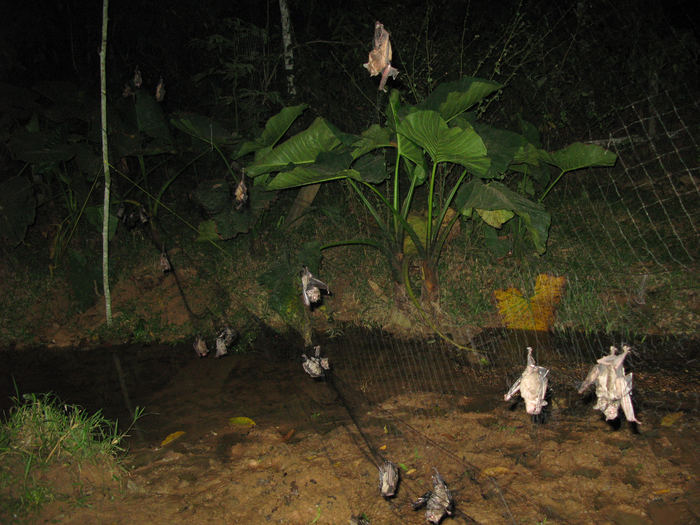Most emerging infectious diseases of humans (like COVID-19) are zoonotic – caused by viruses originating from other animal species. Identifying high-risk viruses earlier can improve research and surveillance priorities. A study publishing in PLOS Biology on September 28th by Nardus Mollentze, Simon Babayan, and Daniel Streicker at University of Glasgow, United Kingdom suggests that machine learning (a type of artifical intelligence) using viral genomes may predict the likelihood that any animal-infecting virus will infect humans, given biologically relevant exposure.

Credit: Daniel Streicker, Mollentze N, et al., PLOS Biology, CC-BY 4.0 (https://creativecommons.org/licenses/by/4.0/)
Most emerging infectious diseases of humans (like COVID-19) are zoonotic – caused by viruses originating from other animal species. Identifying high-risk viruses earlier can improve research and surveillance priorities. A study publishing in PLOS Biology on September 28th by Nardus Mollentze, Simon Babayan, and Daniel Streicker at University of Glasgow, United Kingdom suggests that machine learning (a type of artifical intelligence) using viral genomes may predict the likelihood that any animal-infecting virus will infect humans, given biologically relevant exposure.
Identifying zoonotic diseases prior to emergence is a major challenge because only a small minority of the estimated 1.67 million animal viruses are able to infect humans. To develop machine learning models using viral genome sequences, the researchers first compiled a dataset of 861 virus species from 36 families. They then built machine learning models, which assigned a probability of human infection based on patterns in virus genomes. The authors then applied the best-performing model to analyze patterns in the predicted zoonotic potential of additional virus genomes sampled from a range of species.
The researchers found that viral genomes may have generalizable features that are independent of virus taxonomic relationships and may preadapt viruses to infect humans. They were able to develop machine learning models capable of identifying candidate zoonoses using viral genomes. These models have limitations, as computer models are only a preliminary step of identifying zoonotic viruses with potential to infect humans. Viruses flagged by the models will require confirmatory laboratory testing before pursuing major additional research investments. Further, while these models predict whether viruses might be able to infect humans, the ability to infect is just one part of broader zoonotic risk, which is also influenced by the virus’ virulence in humans, ability to transmit between humans, and the ecological conditions at the time of human exposure.
According to the authors, “Our findings show that the zoonotic potential of viruses can be inferred to a surprisingly large extent from their genome sequence. By highlighting viruses with the greatest potential to become zoonotic, genome-based ranking allows further ecological and virological characterisation to be targeted more effectively.”
“These findings add a crucial piece to the already surprising amount of information that we can extract from the genetic sequence of viruses using AI techniques,” Babayan adds. “A genomic sequence is typically the first, and often only, information we have on newly-discovered viruses, and the more information we can extract from it, the sooner we might identify the virus’ origins and the zoonotic risk it may pose. As more viruses are characterized, the more effective our machine learning models will become at identifying the rare viruses that ought to be closely monitored and prioritized for preemptive vaccine development.”
###
In your coverage please use these URLs to provide access to the freely available article in PLOS Biology: http://journals.plos.org/plosbiology/article?id=10.1371/journal.pbio.3001390
Citation: Mollentze N, Babayan SA, Streicker DG (2021) Identifying and prioritizing potential human-infecting viruses from their genome sequences. PLoS Biol 19(9): e3001390. https://doi.org/10.1371/journal.pbio.3001390
Funding: D.G.S. and N.M. were supported by a Wellcome Senior Research Fellowship (217221/Z/19/Z). Additional funding was provided by the Medical Research Council through program grants MC_UU_12014/8 and MC_UU_12014/12. The funders had no role in study design, data collection and analysis, decision to publish, or preparation of the manuscript.
Journal
PLoS Biology
DOI
10.1371/journal.pbio.3001390
Method of Research
Computational simulation/modeling
Subject of Research
Not applicable
COI Statement
Competing interests: The authors have declared that no competing interests exist.




